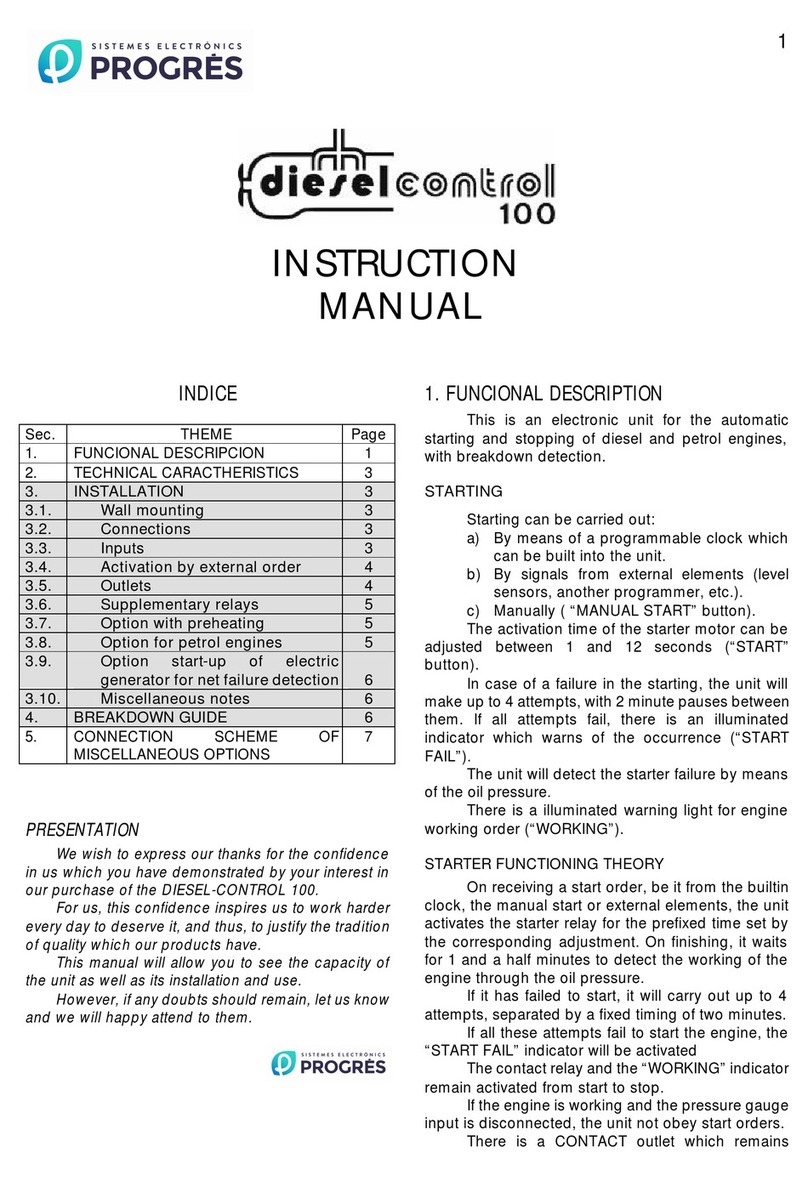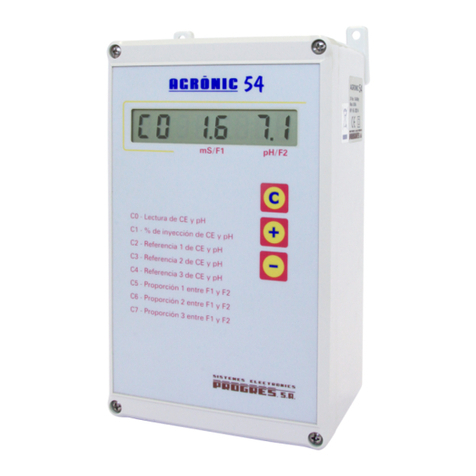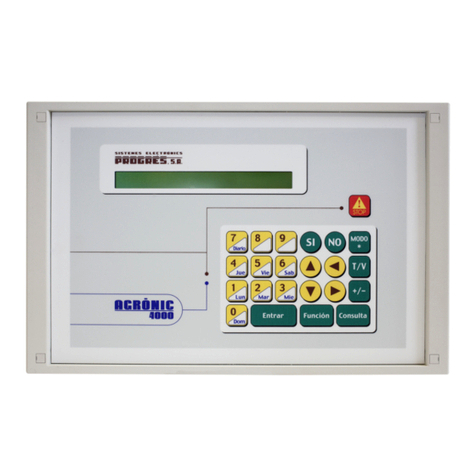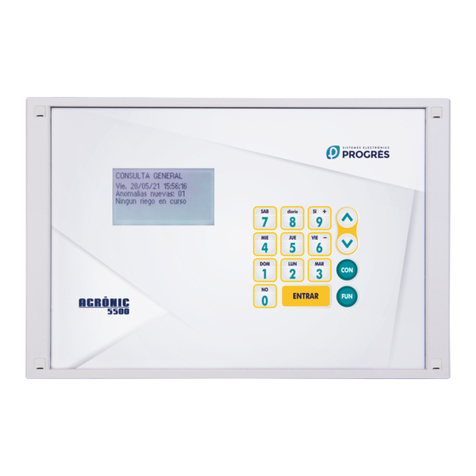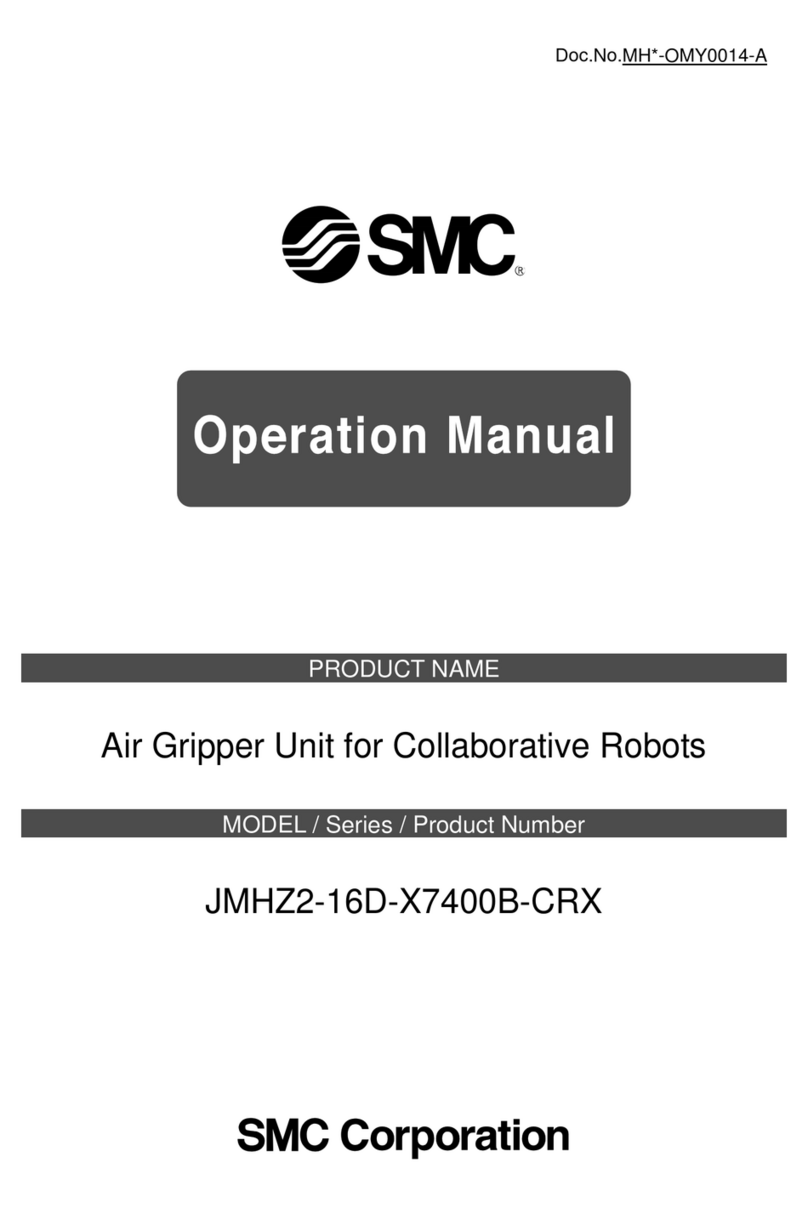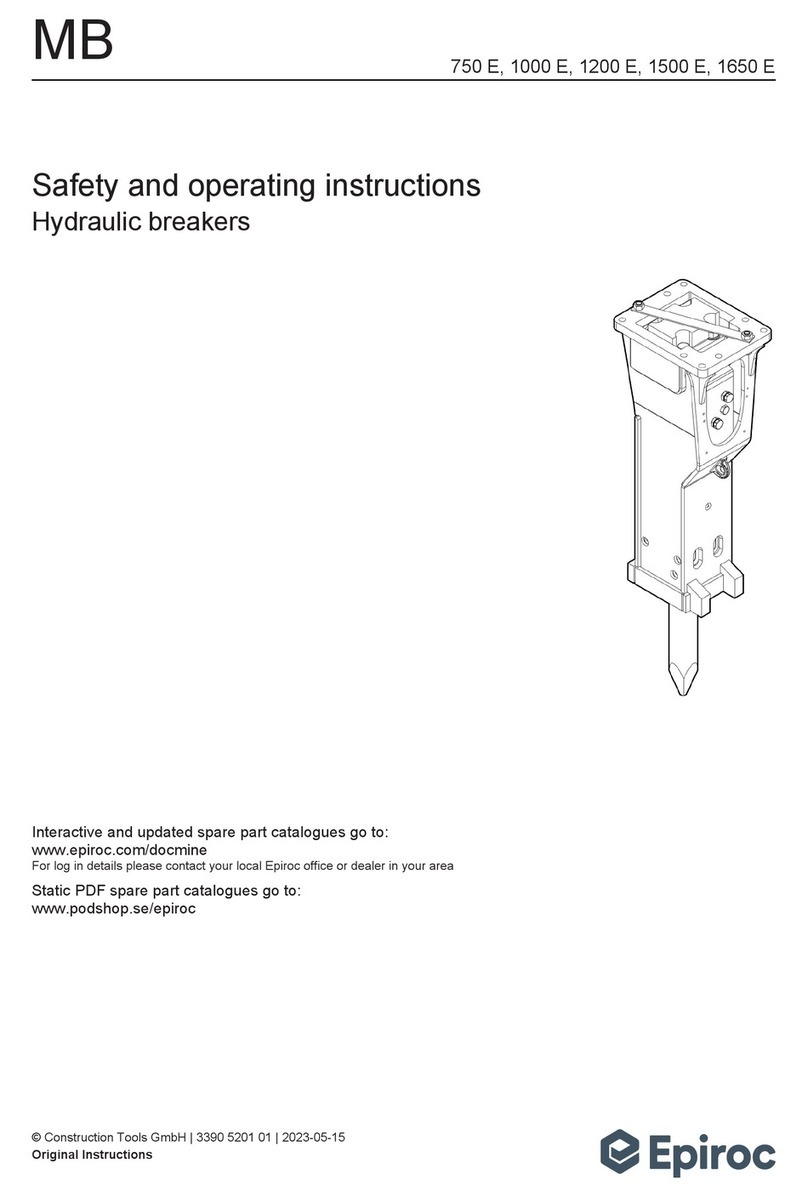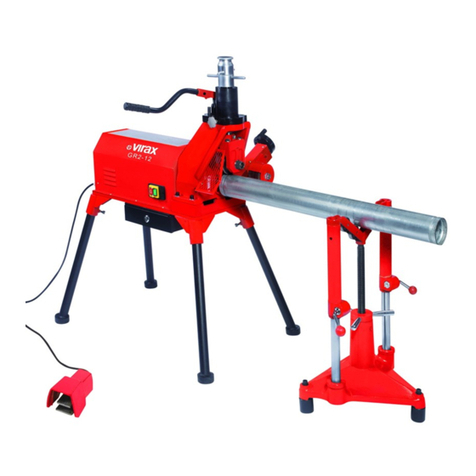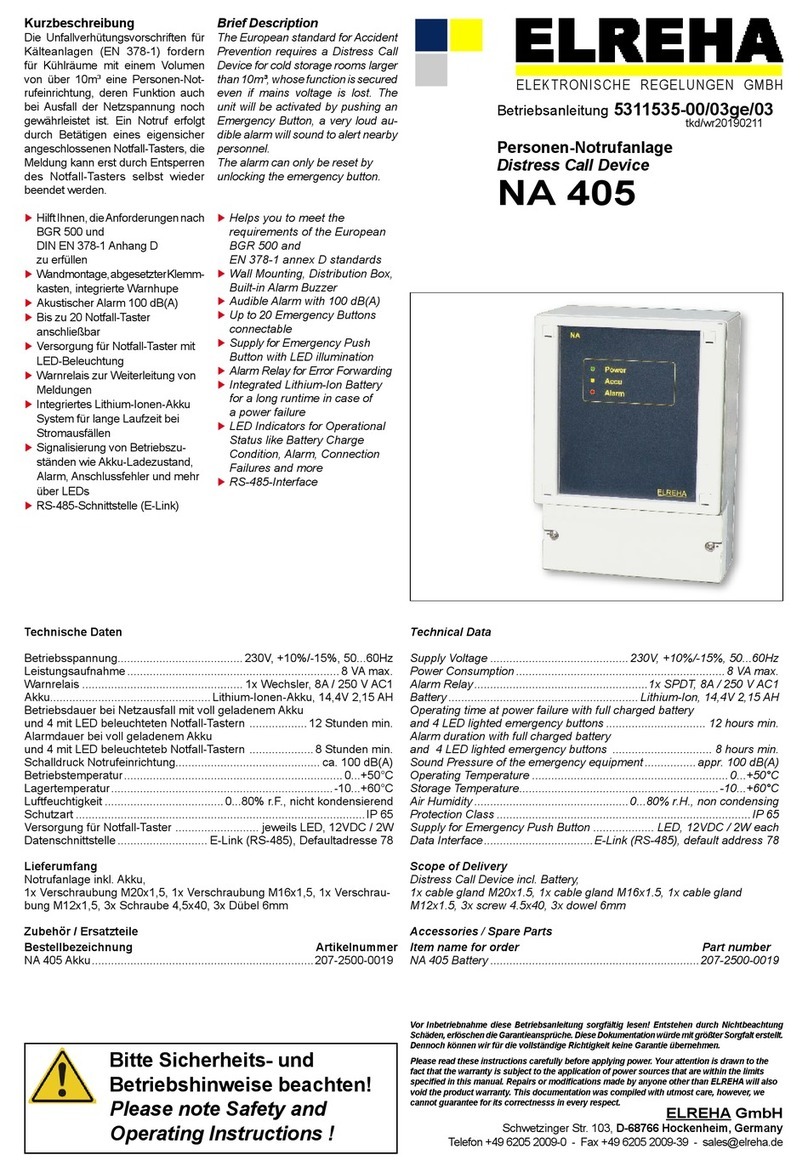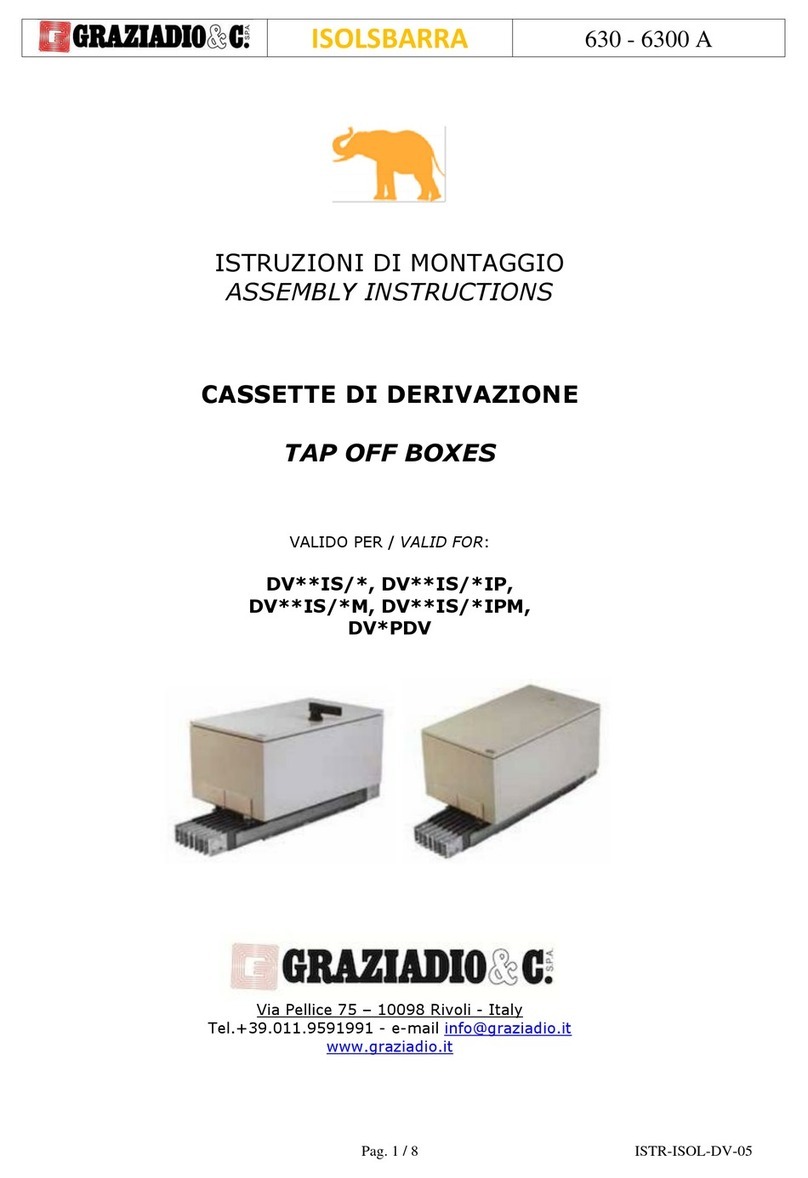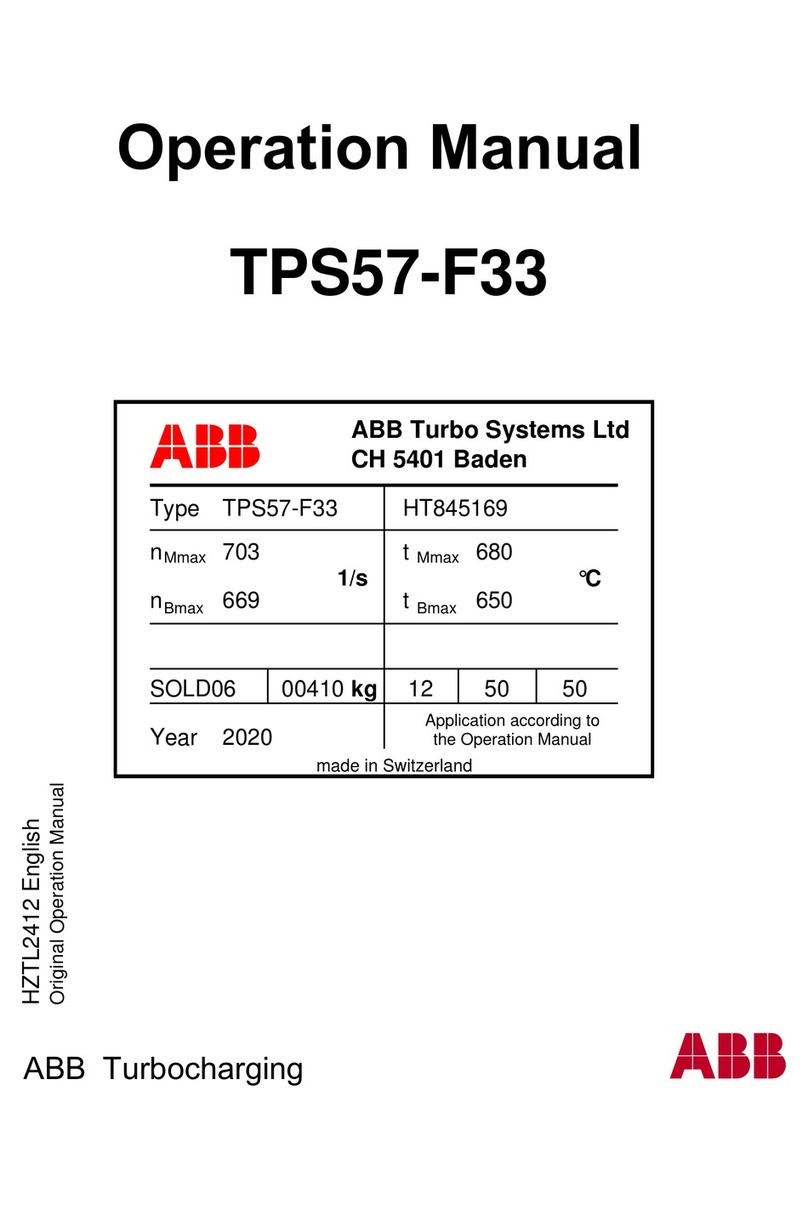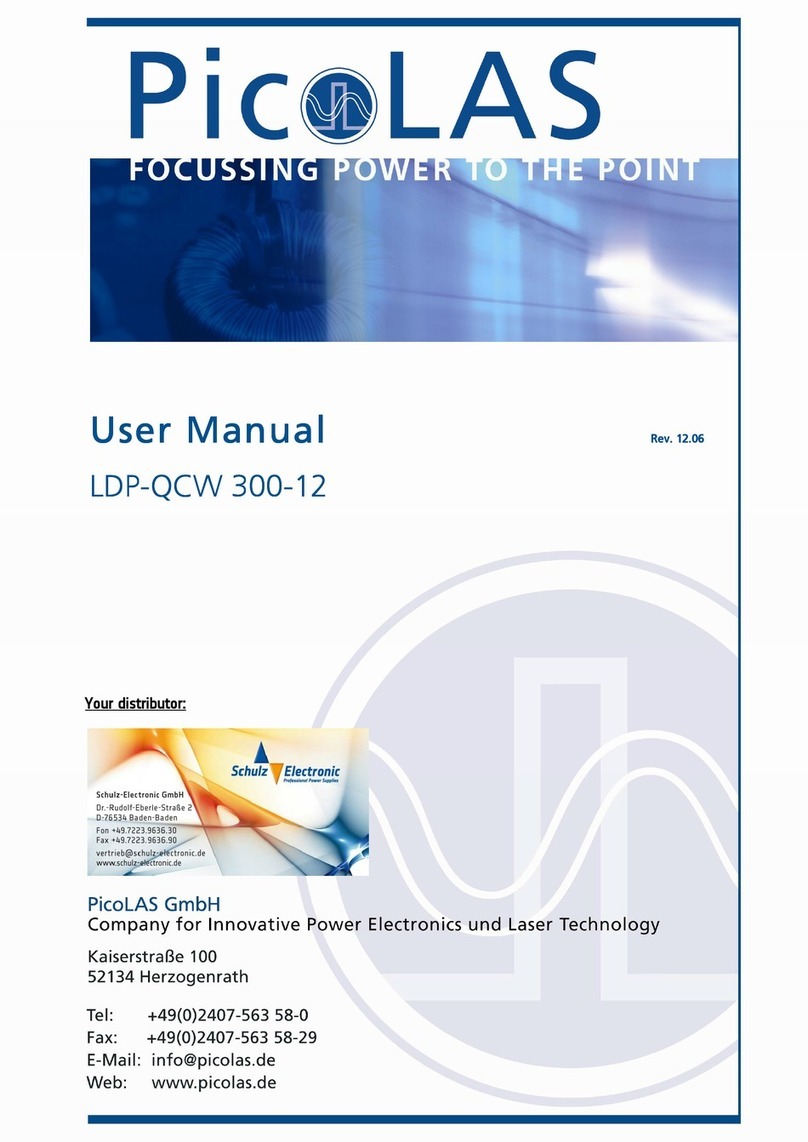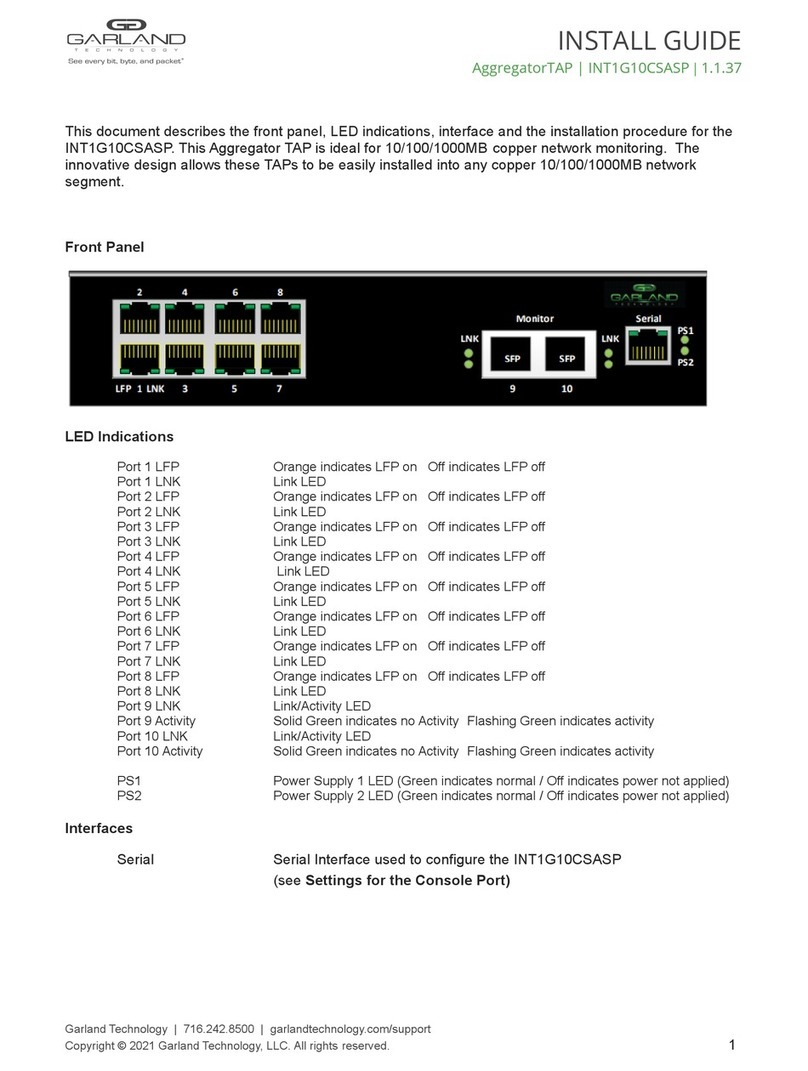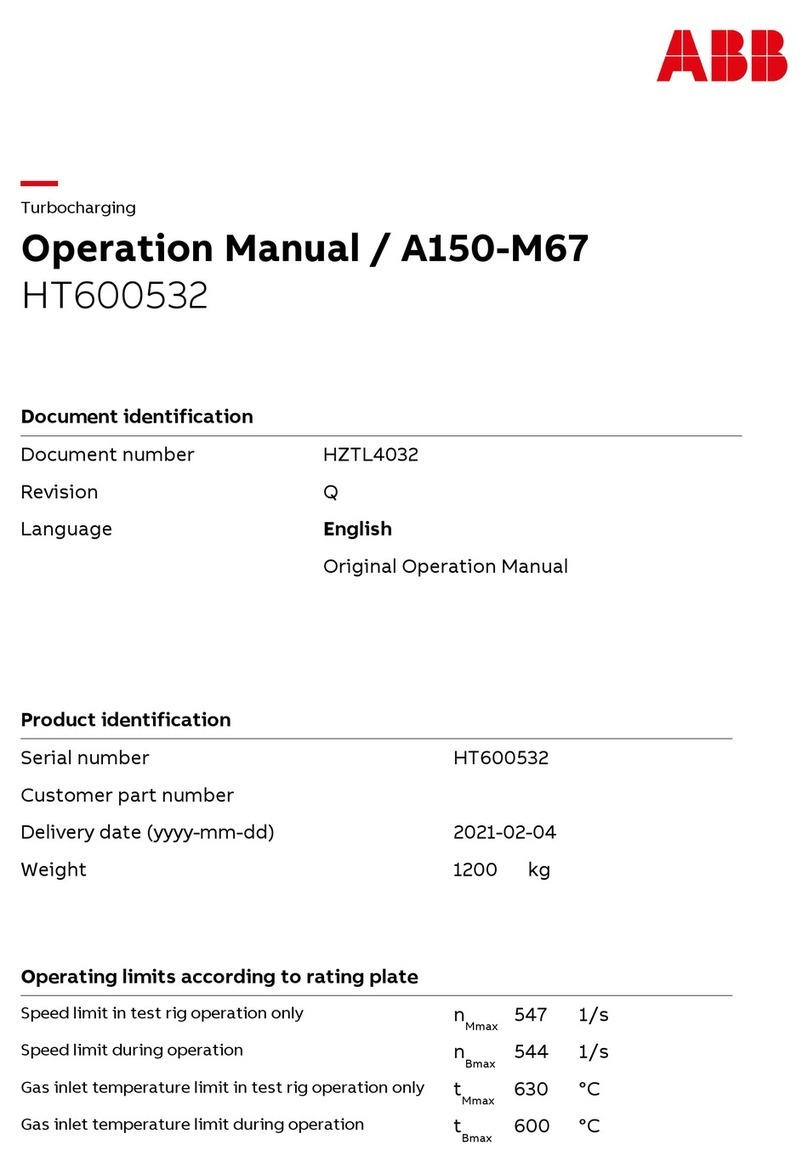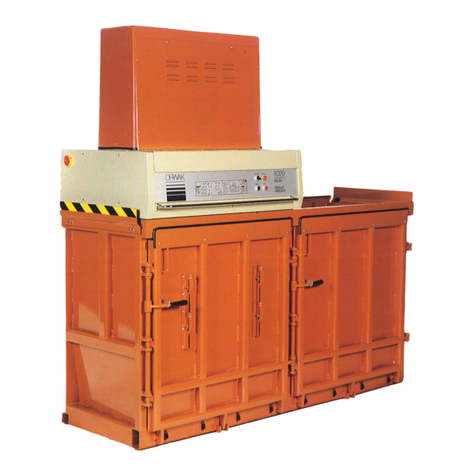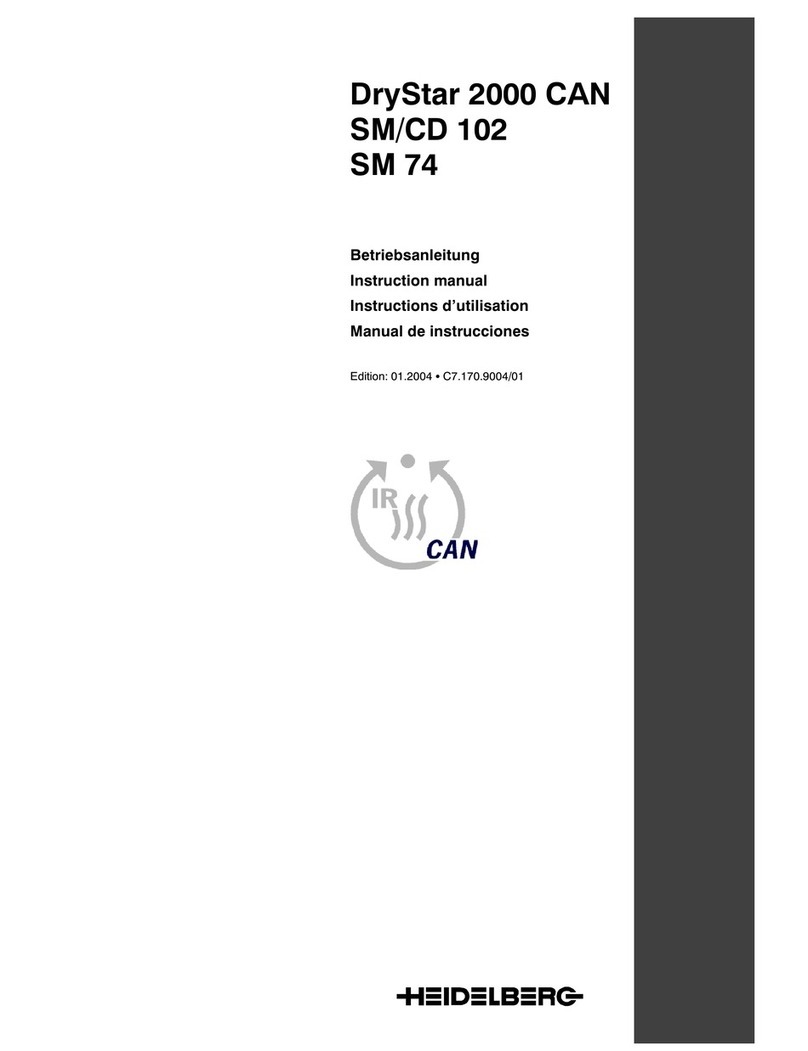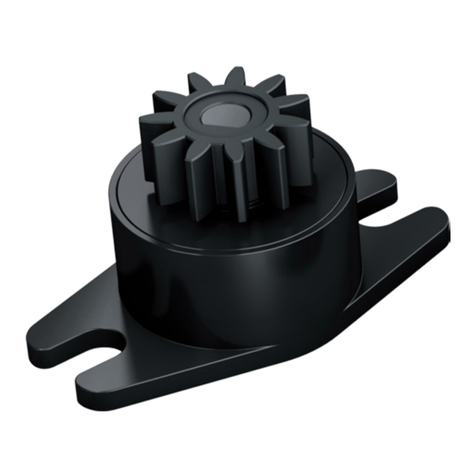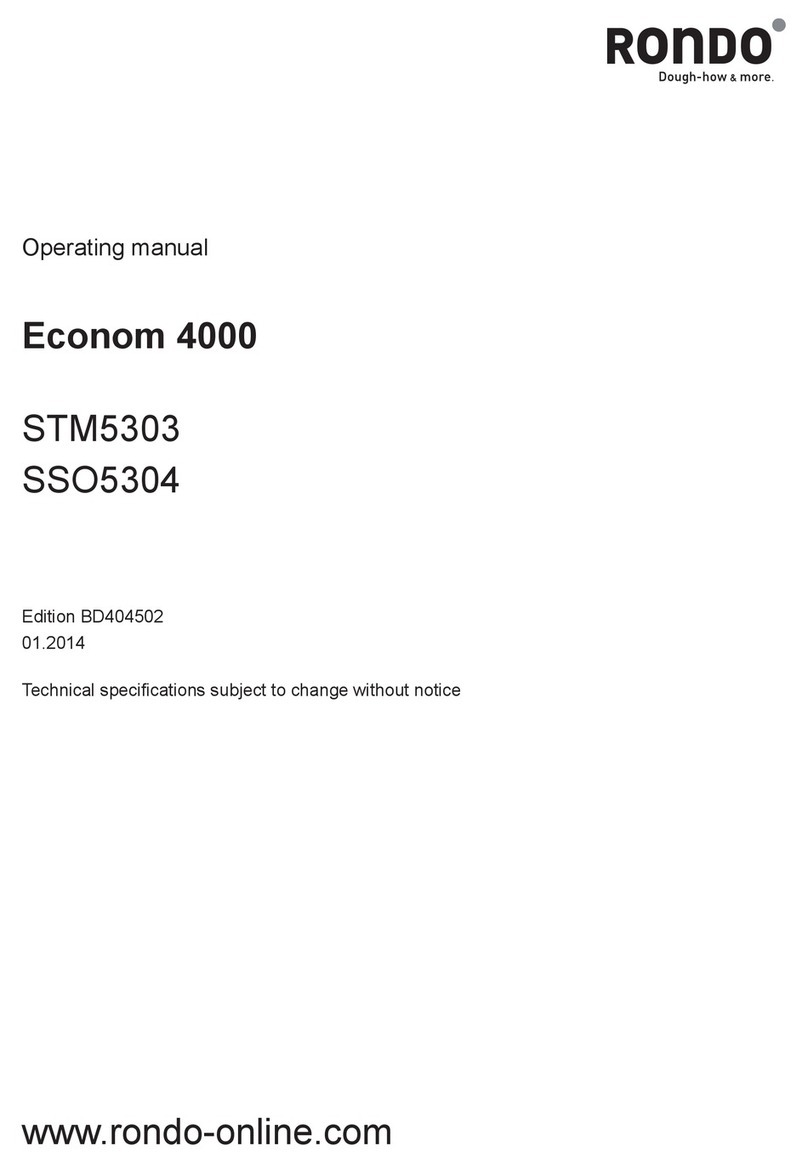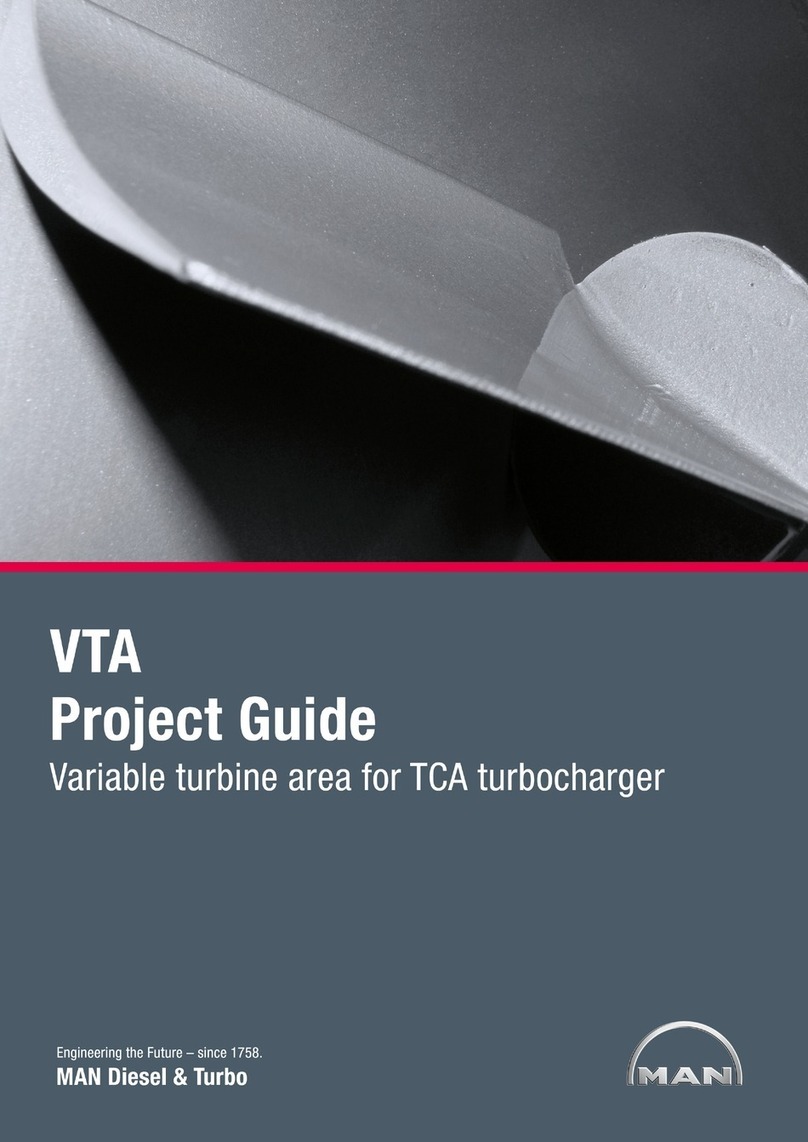Progres AGRONIC 2500 User manual

Sections in the manual:
‒ Use guide
‒ Technical specifications
‒ Programs
‒ Manual
‒ Readings
‒ Consultation
‒ Diesel option
‒ Troubleshooting
‒ Technical support
The Communications Query section is detailed in the
Communications Manual.
The parameters and input and output coding sections
are detailed in the Installer’s Manual.
USER MANUAL
Plus Version | V3
AGRÓNIC 2500

Welcome to the world of Agrónic 2500.
This document will be your guide as you become familiar
with complete mastery of this powerful controller.
The manual is aimed at
end users like you.
There is an extensive guide that details all the features and
functionalities.
Even if you're a beginner in this field, the essential
information is provided so that you can use the controller
eectively. Our goal is to ensure that you feel safe and
prepared.
It is important to note that there are two versions available:
the Basic edition and the Plus edition, each of which is
adapted to its specific specifications and options.
Let’s start this journey!

Index
1 Use guide ............................................................................................................. 4
1.1. General concepts....................................................................................... 4
1.2. First steps with Agrónic............................................................................. 6
1.3. Using the keyboard ................................................................................... 7
1.4. Most-used screens..................................................................................... 8
1.5. Practical examples .................................................................................... 9
1.5.1 Irrigation programs ........................................................................ 9
1.5.2 How can I see................................................................................ 11
2 Technical specifications.................................................................................... 13
3 Programs ........................................................................................................... 14
3.1. Sequential programs............................................................................... 16
3.1.1 Alternating sequential programs ................................................ 17
3.2. Fertilization.............................................................................................. 18
4 Manual ............................................................................................................... 19
4.1. Out of service........................................................................................... 19
4.2. Stop.......................................................................................................... 19
4.3. Programs.................................................................................................. 20
4.4. Filters........................................................................................................ 20
4.5. Clock......................................................................................................... 21
4.6. Terminate stops....................................................................................... 21
4.7. Determining factors................................................................................. 21
4.8. Sectors ..................................................................................................... 21
4.9. Sensors..................................................................................................... 22
4.10. Erase totals .............................................................................................. 22
4.11. Outputs .................................................................................................... 22
5 Readings ............................................................................................................ 23
5.1. Total readings .......................................................................................... 23
5.2. Anomaly readings.................................................................................... 24
5.3. Record readings....................................................................................... 25
5.4. History readings ...................................................................................... 26
5.4.1 Sector history ............................................................................... 27
5.4.2 Meter sensor history..................................................................... 27
5.4.3 Analog sensor history................................................................... 27
6 Consultation...................................................................................................... 28
6.1. General consultation............................................................................... 28
6.2. Program consultation ............................................................................. 29
6.3. Sector consultation ................................................................................. 30
6.4. Fertilizer consultation ............................................................................. 30
6.5. Filter consultation ................................................................................... 31
6.6. Determining factor consultation ............................................................ 31
6.7. Sensor consultation ................................................................................ 32
6.8. Agrónic consultation ............................................................................... 33
7 Diesel option annex .......................................................................................... 34
8 Troubleshooting................................................................................................ 35
9 Technical support.............................................................................................. 36
10 Consultation screens ........................................................................................ 38
11 Function screens ............................................................................................... 40

4User Manual | Agrónic 2500
1 USE GUIDE
This section details basic concepts about the controller, useful for new users who are not familiar
with the Agrónic 2500.
Names such as Programs, Sectors, Records, etc. appear
in Agrónic that may not be familiar to the user. Here
is a short explanation of each of these concepts. The
features in the explanations are not the only ones that
the Agrónic oers, see the installer’s manual for the
complete features.
Pump: it can be a water delivery pump or a general
valve for the farm.
Sector: corresponds to an irrigation valve that opens
water to a part of the farm, for example, a branch of
drip emitters. Each sector can be assigned a pump
so that when the sector is activated the pump is also
activated.
Fertilizer: any liquid supplied to the plant along with
the irrigation water. Fertilizer can be supplied during
the entire irrigation time or only during part of it.
Program: these are automatic irrigation commands in
which sectors and fertilizers are combined with a start
day and time and an irrigation and fertilizer time.
Manual: any action that is required immediately. For
example, activate or stop a program, deactivate an
alarm, make an emergency stop, etc.
1.1. GENERAL CONCEPTS

5
User Manual | Agrónic 2500
Sensor: a mechanical or electronic unit that measures
magnitudes, statuses or quantities. They can be of
three types: analog for magnitudes (for example,
pressure, temperature, soil humidity, etc.), digital for
statuses (for example, valve open or closed, tank full,
etc.) and meters for quantities (for example, meter ir-
rigation, rain gage, etc.). The sensors are connected to
the Agrónic through the analog and digital inputs.
Determining factor: controls that act on the irrigation
programs based on the sensor values. For example,
stopping irrigation when it is windy, starting irrigation
if the soil humidity is very low, modifying the amount
of irrigation based on total radiation, etc.
Record: agrónic makes a record, with date and time,
of everything it does. For example, activate and stop
programs, alarms and malfunctions, communication
failures, etc.
Anomaly: from the record made by Agrónic, there are
some things that are considered possible problems for
irrigation. These are recorded as anomalies and the
number is shown in the general query.

6User Manual | Agrónic 2500
The first screen that appears in Agrónic when it starts
up is General Consultation. The following menus are
available from this screen:
Menu Function
Use the ‘Function’ key to access the menu where the
irrigation programs can be modified, perform manual
actions, read history and anomalies or change the
operating parameters.
FUNCTION
1. PROGRAMS
2. MANUAL
3. READINGS
4. PARAMETERS
5. PIVOTS
Consult menu
Use the ‘Consult’ key to access which shows what
the controller is doing (program, communication, etc.
status) and the unit's specifications (serial number,
version, etc.). Values cannot be modified on these
screens.
CONSULTATION
1. GENERAL
2. PROGRAMS
3. SECTORS
4. FERTILIZINGS
5. FILTERS
Press the ‘Function’ or ‘Consult’ key to return to the
main menu.
The up and down arrows move the menu selection.
It can also be done by pressing the selection number.
When the desired option lights up, press the ‘Enter’ key.
An arrow on the side of the screen indicates that there
are more options.
Modifying values: when a value is modified, it appears
highlighted on the screen (black background and
white text). If it is a numerical value, enter it using the
number keys. If it is text, see the following section. To
validate and jump to the next value, press the ‘Enter’
key. You can also validate using the up or down arrow
keys, but instead of jumping to the next value, it jumps
to the next screen.
An example of how to interpret the questions and how
to modify the possible values to configure is explained:
Example
N. of fertilizers (0 ... 4)
• Underlined value or number: indicates the
default value that is configured in the controller.
Fertilizer general (yes | no) YES
• Indicates the option to respond with ‘yes’ or
‘no’.
Type of fert. (series | parallel) YES FRI
• Indicates that there are several options to
modify.
Example of interpretation
N. of fertilizers: 0
Fertilizer general: no
Type of fert.: series
Screen o: the screen turns o automatically if no
key is pressed for five minutes. To turn it back on, just
press a key and return to the General Consultation. If
any value is being modified, it is saved and the screen
turns o.
1.2. FIRST STEPS WITH AGRÓNIC

7
User Manual | Agrónic 2500
1.3. USING THE KEYBOARD
Entering text: situate the cursor in the space prior to the text; modify it by pressing the key; in this section, the
keys function in the following manner:
Number 0 + “NO” for yes/no confirmation
questions
Number 1 + Sunday, for questions related
to the days of the week.
Number 2 + Monday, for weekday
questions
Number 3 + Tuesday, for weekday
questions
Number 4 + Wednesday, for weekday
questions
Number 5 + Thursday, for weekday
questions
Number 6 + Friday, for weekday questions
+ , for sign and choice questions
Number 7 + Saturday, for weekday
questions
Moves the cursor one character to the
right
Moves the cursor one character to the le
New character, the previous one, letter B
becomes A
New character, the following one, letter B
becomes C
ENTER Accepts the text, skips to the next value
Number 8 + Daily log, for weekday
questions.
Number 9 + “YES”, for yes/no confirmation
questions + , for sign and choice
questions
ENTER Enter key, to accept a menu selection, the
last value entered or confirm the selection
in a question.
Function key, to access the functions
menu and also to go backward when
inside the menus.
Consultation key, to access the
consultation menu or also to go back in
the menus.
Down arrow key, to move the cursor in
the menus, jump to the next screen or the
next day in the records.
Up arrow key, to move the cursor in the
menus, jump to the previous screen or to
the previous day in the records.
Capital letters
Lower-case letters
Numbers
Symbols
Erases and moves to the le

8User Manual | Agrónic 2500
Within the Query menu, the most-used screen is
General Consultation, which shows the date and time
of the Agrónic, whether there is any anomaly or stop
and, if it is irrigating, the sectors that are open.
For further information, see the General query section.
GENERAL CONSULTATION
Mon dd/mm/yy hh:mm:ss
New anomalies: 05
S: 02 03 05 08
M1 F - 2 - - A - 2 - - L -
Within the Function menu, the most-used screens are
Programs to modify irrigation and Manual to activate
or stop irrigation immediately, in addition to other
options.
You can change the irrigation sectors, days of the week,
start time, time or volume, etc. It is recommended not
to change these values when the program is activated.
PROGRAM 01
Sectors: 03 04
SMTWTFS Start: 10:30
Irrigation: 02:40
F1 01:05 F2 00:12
Manual Programs can be used to start or stop irriga-
tion. See section 4 for further information.
MANUAL PROGRAMS
Program: 08
Start: yes
1.4. MOST-USED SCREENS

9
User Manual | Agrónic 2500
Change a program’s irrigation time.
Pressthe ‘Function’keyand gotonumber ‘ 1.Programs’.
FUNCTION
1. PROGRAMS
2. MANUAL
3. READINGS
4. PARAMETERS
Select the program to modify and ‘Enter’.
PROGRAMS
P01 - . S01 S02
P02 - . S03 S04
P03 - .
P04 - .
P05 - .
Press the ‘Enter’ key until the irrigation time is selected.
Modify and press the ‘Enter’ key.
PROGRAM 02
Sectors: 03 04
SMTWTFS Start: 10:00
Irrigation: 02:00
Press or ‘Function’ or ‘Consultation’ to exit.
If the program is irrigating when it has been modified,
the change will not take eect until the next irrigation.
One program activates when another
finishes (sequential program)
Pressthe ‘Function’ key and go tonumber ‘1.Programs’.
FUNCTION
1. PROGRAMS
2. MANUAL
3. REDMINGS
4. PARAMETERS
Select the program to modify and ‘Enter’ .
PROGRAMS
P01 - . S01 S02
P02 - . S03 S04
P03 - .
P04 - .
P05 - .
Press the ‘Enter’ key until the start time is selected.
PROGRAM 03
Sectors: 05 06
SMTWTFS Start: 99:02
Irrigation: 02:00
Enter 99 in the two hour digits (indicates that it is
sequential) and enter the previous program in the two
minute digits. To use 99, it must have been previously
configured in ‘Function - 4. Parameters - 8. Installer -
5. Various’.
In the example above, program 3 would be activated
when program 2 finishes.
Press or ‘Function’ or ‘Consultation’ to exit.
1.5. PRACTICAL EXAMPLES
1.5.1 Irrigation programs

10 User Manual | Agrónic 2500
Stop a program immediately
Press the ‘Function’ key and go to number ‘2. Manual’
and ‘Enter’.
FUNCTION
1. PROGRAMS
2. MANUAL
3. READINGS
4. PARAMETERS
Go to number ‘3. Program’ and ‘Enter’.
MANUAL
1. Out of service
2. STOP
3. Program
4. Filters
9. Clock
Enter the program number to stop and then press
‘Yes/9’ in Stop. Press ‘Enter’ to stop the program.
MANUAL PROGRAMS
Program: 03
Stop: yes
How to exit a definitive stop
When it shows that the Agrónic is in Final Stop in
General Consultation, this indicates that an error
occurred during irrigation that caused the irrigation to
stop and not allow more to enter. In order to continue
irrigation, the Agrónic must be reset by the user.
GENERAL CONSULTATION
Mon 05/07/10 17:28
* DEFINITIVE STOP *
Press the ‘Function’ key and go to number ‘2. Manual’
and ‘Enter’.
FUNCTION
1. PROGRAMS
2. MANUAL
3. READINGS
4. PARAMETERS
Go to number ‘6. Terminate stops’ and ‘Enter’.
MANUAL
2. STOP
3. Program
4. Filters
5. Clock
6. Terminate stops
Within Manual stops there are two questions:
• Stops and malfunctions: enter this to reset the
Agrónic, ‘Yes/9’.
• Irrigation postponed: to continue with the irriga-
tion that has been stopped, enter ‘Yes/9’.
STOP MANUAL
Finish:
stops and malfunctions: yes
Irrigation postponed: no

11
User Manual | Agrónic 2500
How can I see how long it takes to finish
irrigation?
Press the ‘Consultation’ key and go to number ‘2.
Programs’ and ‘Enter’.
CONSULTATION
1. GENERAL
2. PROGRAMS
3. SECTORS
4. FERTILIZERS
5. FILTERS
Enter the program number to consultation and ‘Enter’.
PROGRAM CONSULTATION
01. 02. 03. 04. 05.
06.R 07. 08. 09. 10.
11. 12. 13. 14. 15.
16. 17. 18. 19. 20.
Program No.: 06
The consultation shows the sectors that are activated
and the time or volume le to finish the irrigation.
PROGRAM CONSULTATION 06
Irrigating
Sectors: 03 04
Irrigation: 01:32
How can I see whether a program has
irrigated correctly?
Press the ‘Function’ key and go to number ‘3. Readings’
and ‘Enter’.
FUNCTION
1. PROGRAMS
2. MANUAL
3. READINGS
4. PARAMETERS
5. PÍVOTS
READINGS
1. Totals
2. Anomalies
3. Record
4. History
Change to the previous and next anomaly using the up
and down arrows.
Record number 17 is the one at the beginning of the
program. Indicates the start date and time and the
reason.
RECORD
N17 05/07/10 15:30
Program 2.
Start by: schedule
Record number 27 is the one at the end of the program.
Indicates the date and time of the termination, the
reason why it stopped and whether it stopped before
completing all irrigation. It indicates the amount (time
or volume) remaining without irrigation.
RECORD
N27 05/07/10 16:30
Program 2.
End due to: irrigation end
Irrigation: 00:00
1.5.2 How can I see...

12 User Manual | Agrónic 2500
How can I see the anomalies in the general
consultation?
GENERAL CONSULTATION
Mon 05/07/10 17:28
New anomalies: 05
Press the ‘Function’ key and go to number ‘3. Readings’
and ‘Enter’.
FUNCTION
1. PROGRAMS
2. MANUAL
3. READINGS
4. PARAMETERS
Go to number ‘2. Anomalies’ and ‘Enter’.
REDMINGS
1. Totals
2. Anomalies
3. Record
Change to the previous and next anomaly using the up
and down arrows.
ANOMALY
N33 05/07/10 17:15
Definitive stop
DM input
Press or ‘Function’ or ‘Consultation’ to exit. In the
general consultation, new anomalies are set to 0 once
read.
Go to section 5.2 Anomaly readings to see the
anomalies.

13
User Manual | Agrónic 2500
Voltage 12 Vdc +15% -10%
Frequency --
Power consumption Less than 12.5 W (0.3 W standby)
Fuse Input Thermal (PTC) 1.1 Amp. at 25°C, auto-resettable
General power supply
Voltage From 12 to 24 Vdc or Vac (maximum 30 V)
Fuse Input “R+” Thermal (PTC) 3.0 Amp. at 25°C, auto-resettable
Output power source
Memory No maintenance, 10 years for parameters and programs in FRAM memory and FLASH memory
records
Clock 48 hours without power
Memory and clock safeguard
Digital
Number 9, extendable to 18 and 27.
Type By relay contact, with 24 VAC potential (external transformer).
Limits 30 Vac / 30 Vdc, 1 Ampere, 50-60 Hz, CAT ll (per output)
All outputs have double isolation in respect to the power output.
Outputs
Temperature -5°C to 45°C
Humidity < 85%
Altitude 2000 m
Pollution Grade 2
Environment
Box model From 1.0 kg to 1.6 kg
Built-in model From 1.1 kg to 1.5 kg
Weight
This symbol indicates that electronic devices should not be disposed of along with household waste at the end of their
useful life. The product must be taken to the corresponding collection point for electric and electronic unit recycling and
correctly processed pursuant to Spanish legislation.
Digital sensors Number 6, expandable (option) to 11 on non-Latch models.
Type Coupling options, operate at 12 or 24 V
Analog
(option)
Number 2
Type 4-20 mA, 0-20 V. (on demand, with galvanized separation)
Number 4
Type 4-20 mA
Inputs
Complies with Directive 89/336/EEC for Electromagnetic Compatibility and Low Voltage Directive
73/23/EEC for Product Safety Compliance. Compliance with the following specifications was
demonstrated as indicated in the European Community Oicial Gazette.
Statement of compliance
2 TECHNICAL SPECIFICATIONS
Protective ground
terminal Antenna Ground terminal Double isolation
Symbols that may appear on the product

14 User Manual | Agrónic 2500
To access the menu, press ‘Function’ on the keypad,
select 1.Programs, ‘Enter’.
FUNCTION
1. PROGRAMS
2. MANUAL
3. READINGS
4. PARAMETERS
5. PIVOTS
PROGRAMS
P01 - Tomato. S03 S04
P02 – Pepper. S05
P03 - Pool. S06
P04 - . S02 S01
P05 - . S07 S08
PROGRAM 01
Sectors: 03 04
SMTWTFS Start: 10:30
Irrigation: 02:40
F1 01:05 F2 00:12
2
5
34
1
6
1Program number
2Number of irrigation sectors
3 Days of the week / frequency of days
4Start time / sequential start or by determining
factor
5Irrigation units in time or volume
6Fertilizer units in time or volume
The values entered into programs may vary depending
on what is configured in ‘Function - 4. Parameters - 5.
Programs’ and ‘Function - 4. Parameters - 10. Installer
- 5. Various’.
PROGRAM 02 Pepper
D—X-V- Start: 10:30
Sequential prog.: 01
Start: 99:01
D—X-V- (Start. Condi.)
Sectors (00 ... 30): sector that will activate the program.
There can be up to 4 sectors as configured in ‘Function
- 4. Parameters - 10. Installer - 5. Various’. If they are all 0,
the program is inactive.
If the start is scheduled or conditional and depending
on what is configured in ‘Function - 4. Parameters -
5. Programs - Days of the week’ one of these two
questions are asked:
days of the week: (SMTWTFS) Days of the week to
irrigate, start with Sunday. Press the ‘Daily log/8’ key
to activate or deactivate all of them. The dash indicates
that it is not activated. If the program has a sequential
start type, it is not configured.
Freq: (frequency of days) The number of days to
irrigate. At 1 it irrigates every day, at 2 it irrigates every
other day, at 3 it irrigates one day yes and two No. If
the program has a sequential start type, it is not con-
figured.
Depending on what is configured in ‘Function - 4.
Parameters - 5. Programs - Start Type” one of three
questions are asked:
Schedule start
Start: the program starts when this time is reached.
From 00:01 to 23:59, the time 00:00 is not valid.
Sequential start:
Program sequential: the program starts when the
program that is configured here ends. From 0 to 50. At
0 it does not start. According to the configuration of
‘Function - 4. Parameters - 10. Installer - 5. Various’ the
sequential program is aer 99.
Conditional start
There is no need to enter any value. To start, there
must be a ‘Start’ or ‘Start/Stop’ determining factor
assigned in ‘Function - 4. Parameters - 5. Programs’.
Irrigation: amount of irrigation in the program. In time,
the maximum is 99:59 or 99’59”; in volume, it is 99999
or 9999.9 or 999.99 m3. It depends on the configuration
of ‘Function - 4. Parameters - 10. Installer - 5. Various’.
The units are configured in ‘Function - 4. Parameters -
5. Programs’ and are independent for each program. If
irrigation is by volume, you can also ask for a time and
the program ends when the volume or time ends (from
3 PROGRAMS
A program is an automatic irrigation command that includes which sectors apply, during what
time and for how many irrigation and fertilizer units. The Agrónic has 50 independent or sequen-
tial programs and each program can have up to 4 sectors.

15
Programs | Practical examples
User Manual | Agrónic 2500
0 to 99:59). This is configured in ‘Function - 4. Parame-
ters - 10. Installer - 5. Various’.
PROGRAM 02 Pepper
Sectors: 03 00
SMTWTFS Start: 10:30
Irrigation: 02:40
F1 00:55 F2 00:00
F3 00:00
Activations: 04 03:00
Schedule: 00:00 – 00:00
Period: 06/01 to 06/15
Fertilizer (F1, F2, F3, F4): amount of fertilizer in the
program. In time, the maximum is 99:59 or 99’59”; in
volume, it is 99999 or 9999.9 or 999.99 liters. It depends
on the configuration of ‘Function - 4. Parameters - 10.
Installer - 5. Various’. The units configured in ‘Function
- 4. Parameters - 10. Installer - 5. Various’ are common
for all programs.
Modify pre- and post-irrigation in ‘Function - 4.Param-
eters - 5. Programs.
In ‘Function - 4. Parameters - 10. Installer - 5. Various’
configure whether the following three questions will
appear:
Activations: there may be several activations of the
programs every certain amount of time. First, enter the
number of times the program will be activated (from
0 to 99) and then how oen (from 0 to 99:59). Manual
start only performs one of the activations. If a program
has pending actions, it can be seen in ‘Consultation - 2.
Programs’.
Schedule: (active schedule)If the program starts due
to determining factors, it can only do so within this
schedule. The active schedule does not aect manual
activations. If le at 0, this indicates that the active
schedule is all day. When a program that is irrigation
leaves the active schedule, it can continue with irri-
gation or stop, depending on what is configured in
‘Function - 4. Parameters – Installer – Various’.
Period: (active period) the program is deactivated
outside of the active period. If le at 0, it is always
activated.

16 User Manual | Agrónic 2500
Programs | Sequential programs
When various sectors must be irrigated one aer
another, sequential programming may be used. This
consists of having an initial program configured for
certain irrigation days and a start time and the rest of
the programs in the irrigation sequence configured in
‘Function - 4. Parameters - 5. Programs’ for a type of se-
quential start.
Example
It starts with program 10 in sector 5, everyday at
7:30; once the irrigation has finished, program 11
will automatically start and so on until the last
program, in this case number 14.
PROGRAM 10
Sectors: 05
SMTWTFS Start: 07:30
Irrigation: 02:08
PROGRAM 11
Sectors: 06
Sequential prog.: 10
Irrigation: 01:44
PROGRAM 12
Sectors: 07
Sequential prog.: 11
Irrigation: 01:55
PROGRAM 13
Sectors: 08
Sequential prog.: 12
Irrigation: 02:23
PROGRAM 14
Sectors: 09
Sequential prog.: 13
Irrigation: 01:17
NOTES
• Any order of programs is acceptable, incremental,
decrement, random.
• More than one program can be sequenced when
the first has terminated.
• For a program sequence to stop functioning until
there is a new command, just cancel out the days
of the week in the first program. Enter the days
again enable the sequence.
• When a temporary malfunction (TM) occurs while
a sequential program is running, the program
currently in operation will be stopped and the next
one will continue. If the cause of the malfunction
remains, it successively stops all the programs in
the sequence, registering it in the records.
The installer can prepare the unit to carry out sequen-
tial programs by entering the code ‘99’ in place of the
start time and the program number that will precede
and initialize it, in the place of the start minute.
PROGRAM 10
Sectors: 05
SMTWTFS Start: 07:30
Irrigation: 02:08
PROGRAM 11
Sectors: 06
- - - - - - - Start: 99:10
Irrigation: 01:44
PROGRAM 12
Sectors: 07
- - - - - - - Start: 99:11
Irrigation: 01:55
PROGRAM 13
Sectors: 08
- - - - - - - Start: 99:12
Irrigation: 02:23
PROGRAM 14
Sectors: 09
- - - - - - - Start: 99:13
Irrigation: 01:17
3.1. SEQUENTIAL PROGRAMS

17
Programs | Sequential programs
User Manual | Agrónic 2500
An alternating sequence permits the starting program
in one sequential irrigation program to be alternated
with a dierent program in the sequence.
To do this, the installer must configure the option for
sequential programs to be alternating ones, keeping in
mind that in this case the sequence is ordered from the
lowest program number to the highest.
Using the example in the previous section, the first
time the program starts it will start with program 10
and terminate with 14. The next time the program
starts, it will start with 11 and terminate with 10 and
so on.
The program query will display the text ‘alternate start’
to indicate which program starts in the next activation.
This information will be updated once the current irri-
gation sequence has terminated.
3.1.1 Alternating sequential programs
Alternating sequential programs

18 User Manual | Agrónic 2500
Programs | Fertilization
In series fertilizer, the fertilizers are applied one aer
another; the first is applied when the pre-irrigation
ends and the fertilizer pre-mixing time has finished, if
there is one. When one fertilizer has finished, pre-mix-
ing on the next one can begin.
Series fertilization (one behind the other)
In parallel fertilization, all the fertilizers are applied at
the same time once the pre-irrigation and correspond-
ing pre-mixing times have terminated.
Parallel fertilization (all at the same time)
In uniform parallel fertilization, fertilizer is dispersed
evenly between the pre- and post-irrigation.
Parallel fertilization uniform distribution
The fertilizer general will always remain on whenever
one of the fertilizers is activated.
If a fertilizer is being applied within the post-irriga-
tion area, it will be terminated immediately and an
anomaly will be recorded.
3.2. FERTILIZATION

19
User Manual | Agrónic 2500
4.1. OUT OF SERVICE
4.2. STOP
4 MANUAL
To access the menu, press ‘Function’ on the keyboard,
select ‘2. Manual’, ‘Enter’.
FUNCTION
1. PROGRAMS
2. MANUAL
3. READINGS
4. PARAMETERS
5. PIVOTS
It is divided into twelve sections. To enter one of them,
just press the corresponding index number or move to
the selection with the arrow keys and then press ‘Enter’.
MANUAL
1. Out of service
2. STOP
3. Program
4. Filters
5. Clock
6. Terminate stops
7. Determining factors
8. Sectors
9. Sensors
10. Totals erasure
11. Outputs
12. Pivot
If a menu has more than 5 lines, the ‘↓’ symbol will
be displayed to indicate that they do not fit on the
screen, so press the index number or move the key ‘↓’
to access them.
When it enters out of service, the irrigation in progress
will end and no new irrigation will begin while it
remains in this status. Aer ‘Out of Service’ the pro-
gramming will be operational again and the irrigation
will begin when the conditions in each program are
met.
When entering ‘Stop’, the irrigations in progress are
postponed and it will allow new irrigations to start,
postponing them as well. When the ‘Stop’ status is
complete, programming will resume at the same point
where it was stopped. If a program is started during
the time it is in ‘Stop’, it will be postponed.
Manual commands allow actions to be carried out immediately in Agrónic.
It is used to stop irrigation for a period of time without
de-configuring any program.
It is used when irrigation must be stopped momentari-
ly and for a short time.

20 User Manual | Agrónic 2500
Manual | Programs
4.3. PROGRAMS
Program (00 ... 01 ... 50): program number.
If the program is stopped
Start (Yes | No): ‘Yes’ manually starts the irrigation
program. There are several points to keep in mind
when manually starting a program:
• If there are several activations, only one will be
started.
• If it is in a program sequence, it will continue from
this program to the end.
• It can be started manually even if the program is
outside the active schedule or active period.
If the program is activated
MANUAL PROGRAMS
Program: 12
Stop: no
Out of service: no
Interrupt: 000 h
Frequency: 00
Activations: 02
Time between act.: 00:44
Stop (Yes | No): ‘Yes’ manually stops the irrigation
program. There are several points to keep in mind
when manually stopping a program:
If there are pending activations, they will not stop.
If it is in a program sequence it stops and the next
program will not continue.
Out of service (Yes | No): ‘Yes’ if the program is activated
it stops and cancels irrigation. It will not start again
while it is in out of service.
Suspend (000 ... 250 h): during the time indicated here,
the program will not irrigate and the starts are lost. If
the program is irrigating when it is suspended, the irri-
gation is canceled. At the end of this time, the program
returns to normal operation.
Frequency (00 ... 99): meter of days remaining until the
next irrigation: at 0 it irrigates today, at 1 it irrigates
tomorrow. It is only shown if ‘Function - 4. Parameters
- 5. Programs’ is not configured to work by days of the
week.
Activations (00 ... 99): pending activation meter. At 0 it
is not irrigating.
Time between activations (00:00 ... 99:59): meter of
time remaining between activations. Starts counting
at the start of activation.
4.4. FILTERS
If filter cleaning is stopped:
activate cleaning (Yes | No): ‘Yes’ manually starts
cleaning. If there is no irrigation program, the pump is
not activated, only the filter outputs.
If filter cleaning is activated:
stop cleaning (Yes | No): ‘Yes’ for filter cleaning. Whether
it is with the outputs activated or whether it is in the
waiting time between cleanings.
If filter cleaning is in malfunction:
stop malfunction (Yes | No): ‘Yes’ restarts filter cleaning
aer a malfunction. The malfunction occurs when
more commands have been given from the SC input
than the maximum number of consecutive cleanings
configured in ‘Function - 4. Parameters - 2. Filters’.
Other manuals for AGRONIC 2500
3
Table of contents
Other Progres Industrial Equipment manuals
